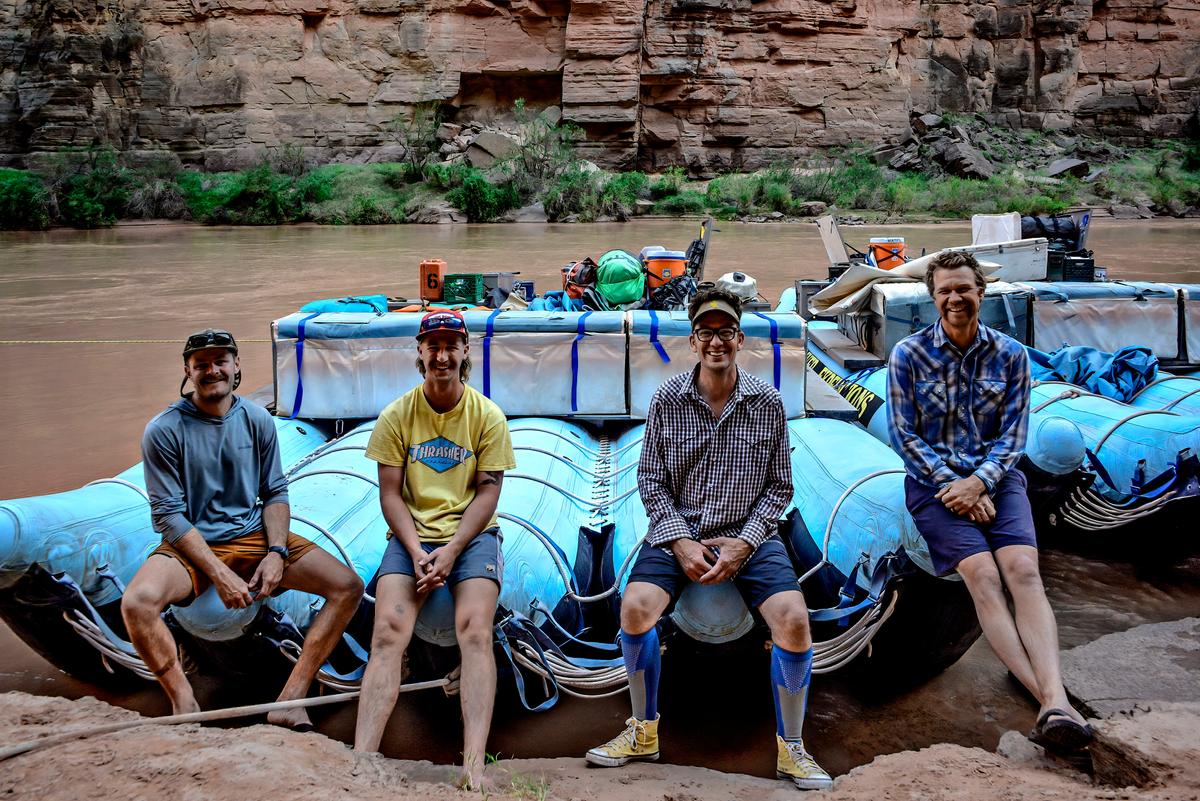The Grand Canyon is one of the most timeless places on earth. The spectacle of the sunrise over the mile-deep, 18-mile-wide chasm is as mesmerizing as watching ocean waves. But just as you can’t grasp the size of the swells without swimming, you can’t comprehend the depth of the canyon without descending. The best way to see it is looking up at the massive walls from a raft while journeying down the Colorado River.

River guides Bill Frothingham (L), Shelby Wolfe, Ben Bressler, and Joe Clark sit on the pontoons of the 35-foot J-Rigs. Maria Coulson





